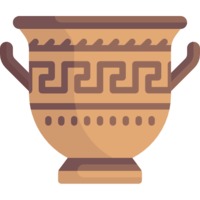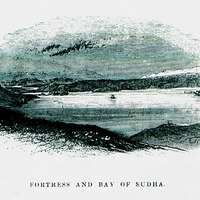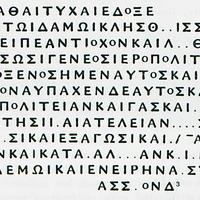Μονή Αγίου Ιωάννη Θεολόγου
Αντικείμενο
Τίτλος Σημείου Ενδιαφέροντος
el
Μονή Αγίου Ιωάννη Θεολόγου
en
Monastery of Agios Ioannis Theologos
Περιγραφή / Απόσπασμα
85-88
en
One of them was a chamber containing resting-places for three occupants, the other had served for four. Scarcely had we passed these tombs before we met a kalógheros”, whose Greek shewed at once that he was not a Cretan ; and from whom I learnt that we should find a lodging for the night in a monastery or rather metókhi", belonging to the great convent of Hāghios Ioannes the Theologian", at Patmos
Παρατηρήσεις
el
Δείπνο με τον ιερωμένο της μονής, το οποίο περιλαμάνει ρυζόγαλα, τυρί από τα Σφακιά, κρεμμύδια, ψωμί και άφθονο νερό.
en
Dinner with the priest of the monastery, which includes rice milk, Sfakia cheese, onions, bread and plenty of water.
Σύγχρονη περιγραφή
el
Η Ιερά Μονή του Αγίου Ιωάννη του Θεολόγου, βρίσκεται σε κεντρικό σημείο της αρχαίας πόλης Άπτερα, δίπλα στις Ρωμαϊκές δεξαμενές. Θεωρείται ότι κτίστηκε τον 7ο αιώνα μ.Χ. ως μετόχι της Μονής του Αγίου Ιωάννη Πάτμου με δομικό υλικό από αρχαιότερα, δημόσια κτήρια. Ο ναός είναι μονόχωρος, χωρίς ιδιαίτερα στοιχεία και το διώροφο παλαιότερο κτήριο του συγκροτήματος χρονολογείται στις αρχές του 16ου αιώνα. Η παλαιότερη αναφορά στο μετόχι γίνεται το 1182, στο χρονικό του Antonio Trivan. Σύμφωνα με τις πηγές οι βυζαντινοί αυτοκράτορες αφιέρωναν μεγάλες εκτάσεις γης στη Μονή. Το μετόχι διατηρούσε προνομιακές σχέσεις με τη βενετική εξουσία ενώ, σύμφωνα με την απογραφή του 1650, εξακολούθησε να λειτουργεί και μετά την οθωμανική κατάκτηση. Ο περιηγητής Robert Pashley επισκέφτηκε το μοναστήρι το 1833 και περιέγραψε ότι οι μοναχοί κατέχουν τους ελαιώνες που περιβάλλουν το κτήριο. Επίσης, οι ίδιοι μοναχοί έδειξαν στον Pashley τα νομίσματα που βρέθηκαν γύρω από το μοναστήρι, χάρη στα οποία κατάφερε να κάνει τη σύνδεση μεταξύ των ερειπίων και της πόλης Άπτερα. Άλλοι περιηγητές ανέφεραν την παρουσία μωσαϊκών στο χώρο του σημερινού παρεκκλησιού του μοναστηριού, που θα ανήκαν, πιθανότατα, σε μια παλαιότερη χριστιανική βασιλική. Η Μονή έπαψε να λειτουργεί το 1962 και η περιουσία της απαλλοτριώθηκε υπέρ των κατοίκων των γύρω χωριών. Σήμερα, γύρω από τη Μονή υπάρχει ακόμα το τείχος της αρχαίας πόλης και ο χώρος έχει αναστηλωθεί πλήρως.
en
The Sacred Monastery of Saint John the Theologian, is located at a central point of the ancient city of Aptera, next to the Roman tanks. It is considered to have been built in the 7th century AD as a glebe of the Monastery of Saint John of Patmos, with building material from more ancient, public buildings. The temple is an only space, without specific elements and the two-storey oldest building of the complex is dated from the beginning of the 16th century. The oldest mention to the glebe is dated from 1182, at the chronicle of Antonio Trivan. According to the sources, the Byzantine emperors dedicated big portions of land to the Monastery. The glebe had privileged relations with the Venetian authority, while, according to the census of 1650, it continued to operate also after the Ottoman conquest. The wanderer Robert Pashley visited the monastery in 1833 and described that the monks own the olive groves that surround the building. Additionally, those same monks showed Pashley the coins that were found around the monastery, thanks to which he managed to make the connection between the ruins and the city of Aptera. Other wanderers mentioned the presence of mosaics at the area of the current chapel of the monastery, which belong, most possibly, to an older Christian basilica. The Monastery stopped operating in 1962 and its assets were expropriated to the benefit of the residents of the surrounding villages. Today, around the Monastery, there is still the wall of the ancient city and the area has been fully restored.




